
Work to clear vegetation along the Heart of Wales line is progressing at an average rate of half a mile a night.

Work to clear vegetation along the Heart of Wales line is progressing at an average rate of half a mile a night.
Vegetation management teams have been working between Craven Arms and Llandovery since January 6, as part of a £1 million project designed to help with adhesion during leaf fall season, and to reduce the number of trees blocking the line or coming into contact with trains.
Until March 28, trees and hedges are being cleared by a minimum of three metres from the track. A particular focus is on stations and structures, where vegetation within 600 and 300 metres respectively will be cut back.
Although current work is focusing on the Heart of Wales line, Network Rail is spending around £52m over the current control period across the Wales and Borders region.
This includes upcoming work on the Cambrian line, where £250,000 has been budgeted during a 16-day closure (which also includes other maintenance). Work has also been done along stretches of the South Wales Main Line - including between Swansea and Carmarthen, and in the Pilning area.

NR has used AIVE (Automated Inspection of Vegetation Encroachment) to calculate risk, by evaluating the volume of detected encroachments and their proximity to the track. This uses train- mounted and aerial cameras to capture images which can be analysed.
Nick Millington, Network Rail’s Wales and Borders Route Director, told RAIL that the technology “eliminates the need for a human to watch frame by frame to identify which trees are close to the railway”.
He explained that encroachment has worsened over the last 30 years, adding: “The automated inspection reduces the necessity of inspecting images manually - a repetitive and laborious task that increases the risk of human error.
“This is not about replacing a role carried out by a human. The accuracy of the algorithm means teams don’t waste time on unnecessary items.”
Ian Harris, Infrastructure Maintenance Delivery Manager at NR, added that vegetation management runs up until bird-nesting season in April.


Come September, teams will then focus on “cost-neutral” zones - areas where there’s wheel slip, and where costs are split with train operators.
Other priorities are areas with dead, dying and dangerous trees, and anything closer than three metres from the track. It’s estimated there are around 40,000 diseased trees on the Wales and Borders network.
RAIL visited Knighton on February 18, when multiple teams were out on the track. Two ground teams of eight were at Broome and Hopton Heath stations, with two others between Knighton and Knucklas.
Matthew Gore, acting project manager on the Heart of Wales work, said the route is split into six zones between Craven Arms and Swansea. It’s hoped that two zones are then revisited on a three-year cycle.
“The plan is if we do that every three years, it will take a third of the time and you just come through in a two or three-week period, and trim it all back again,” he said.
“Over the previous years we have been flailing, but we haven’t had the financial input to have multiple flails. We could have been flailing every weekend here for the year to try and achieve what we’re achieving now.”
A key part of achieving this is the Mulag saws, which were trialled in Knighton last year before being used on the Wrexham-Bidston line in the autumn.
Gore explained: “On the front they’ve got a hydraulic arm with three blades. They can go to almost seven metres clearance and cut. They’ll cut about a 150mm branch. On the back they have a mulcher, similar to a flail, so they can go through blackthorn and stuff like that.
“We are finding that we are clearing a minimum generally of about half a mile a night. It’s quite quick.
“When we use flails, we smash the branches, so we end up with five or six new growth stems. With these, you get one clean cut, so we’re only having one growth stem.”
During RAIL’s visit, the two teams working with Mulag equipment were operating a pair of road-rail vehicles - one fitted with the saw, another with a chipper.
Harris said the new equipment was “really good”, adding: “For knocking out the volumes we’re doing now, no industry can do vegetation management like we do.”
Login to continue reading
Or register with RAIL to keep up-to-date with the latest news, insight and opinion.

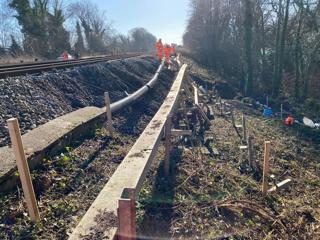
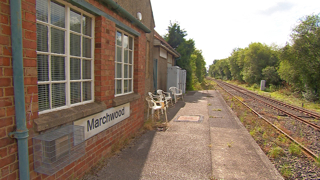
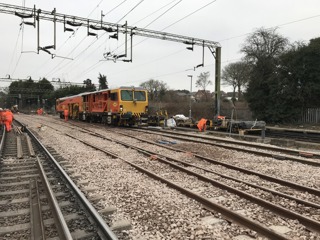
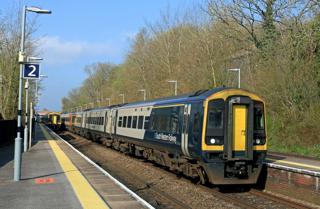
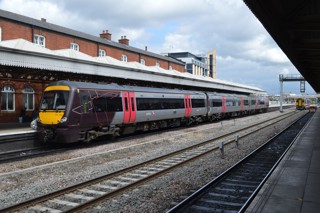

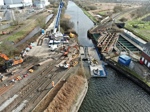







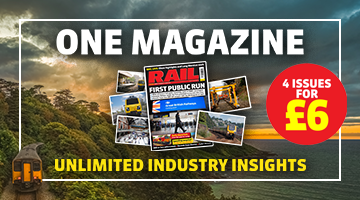

Login to comment
Comments
No comments have been made yet.